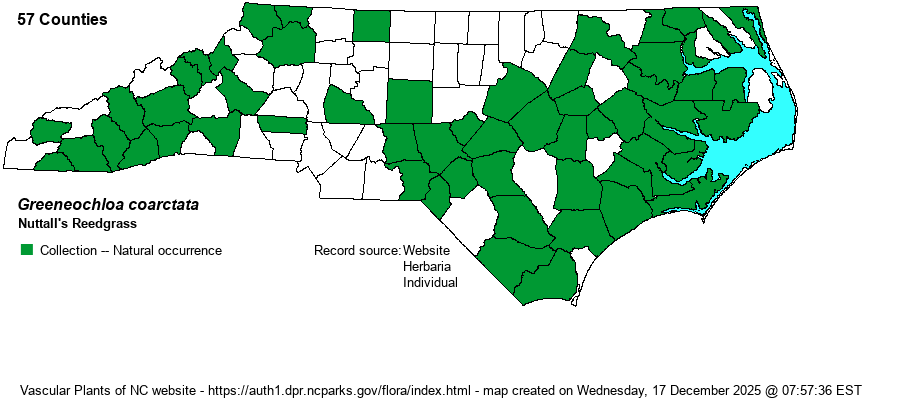| Author | (A.A. Eaton) P.M. Peterson et al. | |
| Distribution | Mostly Coastal Plain, Sandhills, and Mountains; curiously scarce in the Piedmont, but as it is also scarce in much of the VA Piedmont, this scarcity is real.
N.S. to northeastern SC, mostly on the Coastal Plain; in the Mountains south to GA and AL. | |
| Abundance | Frequent to common in the Coastal Plain and Mountains, except rare to locally uncommon in most of the Piedmont; distribution is clearly bimodal. Individual populations seldom have more than 10-20 plants. The website editors suggest a State Rank of S5 owing to its broad range and being frequently encountered in many areas. | |
| Habitat | Moist to wet forests (usually near streams), montane bogs, wet pine savannas. | |
| Phenology | Flowering and fruiting July-October. | |
| Identification | When fresh, the inflorescence is denser than that of Calamagrostis canadensis, C. cainii, and C. porteri. The inflorescence is also pale green with a purplish tinge (vs. pale brown or straw color in the other 3 species). The awns are very short and are attached to the upper 2/5 of the lemmas (vs. attached in the lower 1/2 of the lemmas in the other several species). | |
| Taxonomic Comments | Long known as Calamagrostis cinnoides (Muhlenberg) W.P.C. Barton. In a 2019 paper, Peterson et al. have created the genus Greeneochloa for this and one other species.
| |
| Other Common Name(s) | Arctic Reedgrass, Small Reedgrass | |
| State Rank | S4 [S5] | |
| Global Rank | G5 | |
| State Status | | |
| US Status | | |
| USACE-agcp | | |
| USACE-emp | | |

